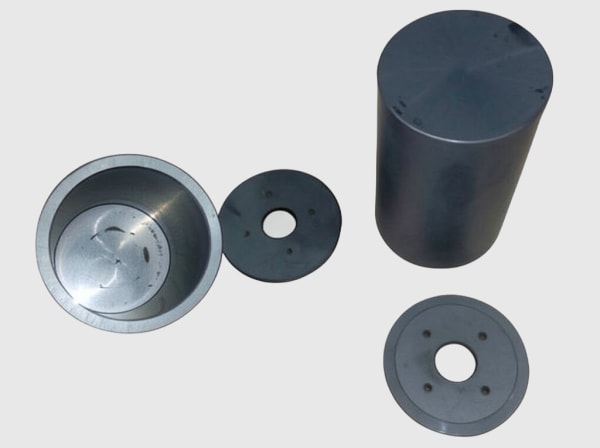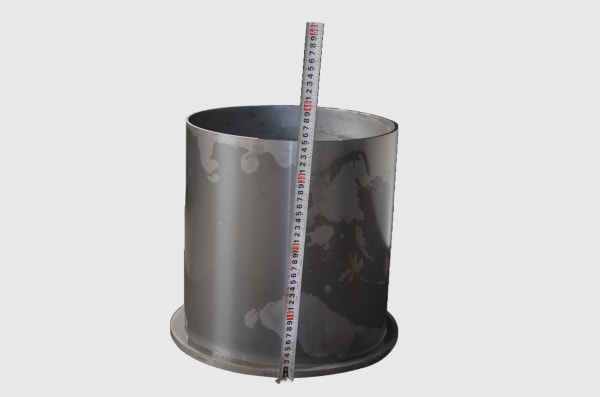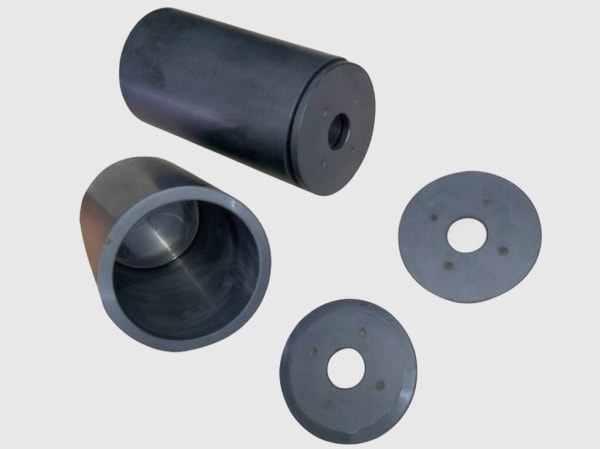When Pakistani factories push for higher output under relentless heat and dust, the first conversion stage often decides the fate of the entire power train. Silicon Carbide Modules for DC Boost Stages Optimized for High‑Frequency Soft Switching in PV and UPS Systems are engineered to set that foundation. In 50–250 kW string PV inverters and robust industrial UPS systems that stabilize textile, cement, and steel operations, Sicarbtech’s SiC boost modules deliver the fast, low‑loss energy lift that 1000/1500 V platforms demand. Building on a decade of customization experience in Weifang’s silicon carbide hub and backed by the Chinese Academy of Sciences, Sicarbtech combines low‑RDS(on) MOSFET arrays, ultra‑fast Schottky diodes, silver‑sintered thermal paths, and low‑inductance bus connections to enable clean soft switching at 40–100 kHz—without sacrificing reliability in Pakistan’s weak‑grid conditions.
Silicon Carbide Modules for DC Boost Stages Optimized for High‑Frequency Soft Switching in PV and UPS Systems product overview and 2025 market relevance
Across Faisalabad’s textile clusters, Punjab’s cement corridor, and Karachi’s steel mills, PV adoption is moving rapidly toward 1500 V DC strings to reduce current and copper use. UPS systems are likewise scaling for ride‑through and production quality, especially where feeder flicker impacts sensitive lines and kilns. Silicon Carbide Modules for DC Boost Stages Optimized for High‑Frequency Soft Switching in PV and UPS Systems directly address this migration. By operating efficiently at elevated switching frequencies, these modules shrink inductors and capacitors while maintaining low ripple and excellent transient behavior. The payoff is lighter, smaller outdoor enclosures with high protection ratings, easier rooftop installations, and faster commissioning cycles that underpin Pakistan’s EPC economics.
In 2025, tender documents increasingly cite NEPRA‑aligned interconnection criteria, IEC 62109 safety, IEC 61000‑6‑2/‑6‑4 EMC, and IEC 62116 anti‑islanding references. Silicon Carbide Modules for DC Boost Stages Optimized for High‑Frequency Soft Switching in PV and UPS Systems are built for this compliance environment. Low parasitics enable predictable emissions, high‑temperature operation reduces derating at 50°C inlet air, and integrated sensing simplifies protection tuning and certification.

Silicon Carbide Modules for DC Boost Stages Optimized for High‑Frequency Soft Switching in PV and UPS Systems technical specifications and advanced features
Inside Silicon Carbide Modules for DC Boost Stages Optimized for High‑Frequency Soft Switching in PV and UPS Systems, Sicarbtech deploys customized 1200 V and 1700 V SiC MOSFETs selected for low RDS(on) and tight temperature coefficients, ensuring conduction losses remain controlled at elevated junction temperatures. Complementary 1200 V SiC Schottky diodes with ultra‑fast recovery suppression eliminate reverse‑recovery tails that typically complicate boost transitions, especially under partial soft‑switching regimes. The module substrate is AlN or a SiC‑composite with high thermal conductivity, spreading heat uniformly across parallel die, while silver sintering and vacuum brazing minimize thermal impedance to the baseplate.
The mechanical layout co‑optimizes current loops with stacked DC busbars that collapse stray inductance to single‑digit nanohenries, helping achieve clean soft‑switching turn‑ons and turn‑offs. Kelvin source pads allow precise gate control at high dv/dt, and the module can be paired with high CMTI drivers and low‑noise isolated supplies. Temperature sensing near the die and optional current‑sense outputs provide real‑time telemetry to the digital controller, which is critical when Pakistan’s feeders fluctuate and inlets climb to 50°C. The result is a DC boost stage that runs at 40–100 kHz with reduced ripple energy, smaller magnetics, and lower acoustic and thermal burden on the cabinet.
Pakistan‑relevant performance comparison for Silicon Carbide Modules for DC Boost Stages Optimized for High‑Frequency Soft Switching in PV and UPS Systems
| Boost stage KPI in Pakistan’s C&I conditions | Silicon Carbide Modules for DC Boost Stages Optimized for High‑Frequency Soft Switching in PV and UPS Systems | Conventional silicon boost assemblies |
|---|---|---|
| DC platform compatibility | 1000/1500 V with 1200/1700 V device options | Primarily 1000/1100 V, 1500 V with derating |
| Switching frequency envelope | 40–100 kHz with soft‑switching focus | 8–20 kHz, hard‑switching dominant |
| Peak/Euro efficiency impact | +0.5–1.0 pp peak; +0.3–0.8 pp Euro system‑level | Baseline; higher switching/conduction loss |
| Magnetics size and mass | 20–40% reduction in inductors/caps | Larger passives and filter banks |
| Thermal behavior at 50°C inlet | Minimal derating, stable junctions | Significant derating and fan count increase |
| EMI and overshoot | Low parasitics; easier EMC closure | Higher parasitics; heavy filtering needed |
Key advantages and proven benefits of Silicon Carbide Modules for DC Boost Stages Optimized for High‑Frequency Soft Switching in PV and UPS Systems with expert quote
The first measurable advantage is magnetics reduction—lighter inductors and smaller film capacitors translate directly into lower cabinet mass and cost per watt. Moreover, Silicon Carbide Modules for DC Boost Stages Optimized for High‑Frequency Soft Switching in PV and UPS Systems improve partial‑load efficiency and reduce thermal headroom requirements, which keeps fan counts and acoustic noise down. In Pakistani rooftop deployments where structure load and installation time are tightly managed, these gains allow faster cranes, fewer reinforcements, and simpler commissioning. The soft‑switching emphasis and Schottky behavior also produce visibly cleaner waveforms, which helps downstream inverter stages and eases grid‑code compliance.
“SiC boost stages are where you bank most of your system efficiency before harmonics become political,” remarks Dr. Noman Iqbal, IEEE member and senior inverter designer, referencing 2024–2025 C&I PV evaluations across South Asia (source: IEEE Power Conversion Review, 2025). “If the boost runs cool and clean, the rest of the inverter behaves.”
Construction and control feature comparison for Silicon Carbide Modules for DC Boost Stages Optimized for High‑Frequency Soft Switching in PV and UPS Systems
| Attribute | Silicon Carbide Modules for DC Boost Stages Optimized for High‑Frequency Soft Switching in PV and UPS Systems | Typical silicon alternative |
|---|---|---|
| Die and diode pairing | Low‑RDS(on) SiC MOSFETs + ultra‑fast SiC Schottky | IGBT + Si diodes with reverse recovery |
| Thermal stack | Silver sinter, AlN/SiC‑composite substrate | Solder attach, alumina substrate |
| Parasitic control | Stacked DC bus, <10 nH target loop | Conventional bus, higher inductance |
| Sensing and protection | On‑module temp sense, optional current sense; driver soft turn‑off | External sensors; limited protection granularity |
| Reliability domain | Validated toward 175°C junction, THB/HALT | Lower temperature and cycling endurance |
Real‑world applications and measurable success stories using Silicon Carbide Modules for DC Boost Stages Optimized for High‑Frequency Soft Switching in PV and UPS Systems
A Faisalabad textile rooftop program upgraded its 100 kW string inverter line by adopting Silicon Carbide Modules for DC Boost Stages Optimized for High‑Frequency Soft Switching in PV and UPS Systems. The design shifted from 18 kHz hard switching to 65 kHz soft‑switching operation. Magnetics volume fell by 33 percent, enclosure weight dropped by 22 percent, and installers reported two hours less average crane time per building. Thermal telemetry during June heatwaves showed stable device junctions with a single low‑noise fan per MPPT channel, compared to two previously, without triggering derating.
In a southern Punjab ground‑mounted distributed site, the same Silicon Carbide Modules for DC Boost Stages Optimized for High‑Frequency Soft Switching in PV and UPS Systems delivered a 0.6 percentage point increase in European efficiency versus the previous silicon boost implementation. Harmonic audits confirmed lower DC‑side ripple feeding the inverter stage, which helped the system meet IEEE‑519‑aligned AC limits with a smaller LCL filter. UPS deployments in a Karachi steel mill reported reduced switching stress on batteries and smoother charging profiles, extending service intervals and stabilizing sensitive drives during monsoon‑season voltage swells.
Application outcomes by topology for Silicon Carbide Modules for DC Boost Stages Optimized for High‑Frequency Soft Switching in PV and UPS Systems
| Topology and site goal | With Silicon Carbide Modules for DC Boost Stages Optimized for High‑Frequency Soft Switching in PV and UPS Systems | With silicon boost |
|---|---|---|
| 1500 V PV boost (string inverter) | 60–70 kHz soft switching; 30–40% smaller magnetics; smooth MPPT | 12–15 kHz; larger magnetics; slower MPPT dynamics |
| Industrial UPS front‑end PFC/boost | Higher efficiency at partial load; cooler cabinets | Lower partial‑load efficiency; more fan noise |
| Weak‑grid ride‑through | Cleaner DC bus ripple; fewer inverter trips | Elevated ripple propagates; higher trip rate |
Selection and maintenance considerations for Silicon Carbide Modules for DC Boost Stages Optimized for High‑Frequency Soft Switching in PV and UPS Systems
Choosing between 1200 V and 1700 V device configurations hinges on string voltage, cable length, and transient energy. For 1500 V arrays on expansive rooftops or ground sites with long homeruns, Pakistani OEMs often prefer 1700 V devices for additional headroom. Integrating Silicon Carbide Modules for DC Boost Stages Optimized for High‑Frequency Soft Switching in PV and UPS Systems with stacked DC busbars is essential to maintain sub‑10 nH loops, which in turn preserves soft‑switching behavior and minimizes emissions. During EMC closure, Sicarbtech’s application engineers typically begin with conservative gate resistance and Kelvin source routing, then progressively optimize edges to meet IEC 61000‑6‑4 limits without oversizing filters. Maintenance plans should account for lower fan counts and anti‑dust fin coatings while still scheduling periodic cleaning in cement and textile zones. Verifying temperature sensor calibration during annual service helps sustain accurate derating thresholds throughout Pakistan’s seasonal extremes.
Industry success factors and customer testimonials for Silicon Carbide Modules for DC Boost Stages Optimized for High‑Frequency Soft Switching in PV and UPS Systems
Speed to certification, predictable field behavior at 50°C inlet air, and cost‑per‑watt advantages drive adoption in Pakistan. Silicon Carbide Modules for DC Boost Stages Optimized for High‑Frequency Soft Switching in PV and UPS Systems address all three. A Lahore‑based EPC project manager put it succinctly after a portfolio rollout, “We cleared EMC faster and shipped lighter boxes. On the roof, everything just moved quicker—and the data stayed cool.” That consistent execution is why Sicarbtech’s boost modules are increasingly specified by regional OEMs aiming at 2025 tender windows.
Future innovations and market trends around Silicon Carbide Modules for DC Boost Stages Optimized for High‑Frequency Soft Switching in PV and UPS Systems
Looking ahead, Silicon Carbide Modules for DC Boost Stages Optimized for High‑Frequency Soft Switching in PV and UPS Systems will integrate more refined current sensing and tighter thermal coupling for model‑based control, enabling even smoother MPPT and UPS charging at high frequency. Sicarbtech’s roadmap emphasizes further reductions in temperature‑coefficient of RDS(on), enhanced short‑circuit robustness, and substrate innovations to extend power cycling life in harsh Pakistani summers. With localization gaining weight in tenders, Sicarbtech’s technology transfer—covering silver‑sinter processes, reliability test rigs, and EHS‑compliant line setup—will help Pakistani partners reduce lead times and hedge currency risk while meeting PEC‑informed manufacturing best practices.
Common questions and expert answers on Silicon Carbide Modules for DC Boost Stages Optimized for High‑Frequency Soft Switching in PV and UPS Systems
How do Silicon Carbide Modules for DC Boost Stages Optimized for High‑Frequency Soft Switching in PV and UPS Systems improve efficiency at 1500 V?
They combine low‑RDS(on) SiC MOSFETs with SiC Schottky diodes and low‑inductance buses, enabling soft‑switching at higher frequencies. This reduces switching losses and shrinks magnetics, lifting peak and European efficiency even at high ambient temperatures.
Are Silicon Carbide Modules for DC Boost Stages Optimized for High‑Frequency Soft Switching in PV and UPS Systems suitable for dusty, hot sites?
Yes. Silver‑sintered thermal paths and high‑conductivity substrates sustain operation at elevated junction temperatures, and smaller heat sinks with anti‑dust coatings reduce clogging and maintenance.
What impact do Silicon Carbide Modules for DC Boost Stages Optimized for High‑Frequency Soft Switching in PV and UPS Systems have on EMC?
Lower parasitics and controlled edges yield cleaner spectra, allowing smaller EMI filters to meet IEC 61000‑6‑4 limits. This shortens certification cycles and cuts copper and core mass.
Can Silicon Carbide Modules for DC Boost Stages Optimized for High‑Frequency Soft Switching in PV and UPS Systems be integrated into existing designs?
Often yes. Sicarbtech supports migration plans that phase in the SiC boost while maintaining existing inverter bridges, followed by a full SiC rollout when practical.
What selection criteria matter most for Silicon Carbide Modules for DC Boost Stages Optimized for High‑Frequency Soft Switching in PV and UPS Systems?
DC voltage class, expected transients, cable layout, desired switching frequency, and thermal strategy. Sicarbtech assists with simulations to lock in device voltage, busbar geometry, and gate drive settings.
Why Silicon Carbide Modules for DC Boost Stages Optimized for High‑Frequency Soft Switching in PV and UPS Systems work for your operations
Pakistan’s grid volatility, combined with the environmental load on outdoor enclosures, demands a boost stage that is both efficient and forgiving. Silicon Carbide Modules for DC Boost Stages Optimized for High‑Frequency Soft Switching in PV and UPS Systems deliver that balance. By collapsing parasitics, elevating switching frequency, and preserving thermal integrity, they unlock lighter, quieter, and more reliable inverters and UPS systems that keep production lines steady—even on the hottest, dustiest afternoons.
Connect with specialists for custom solutions
Sicarbtech pairs Silicon Carbide Modules for DC Boost Stages Optimized for High‑Frequency Soft Switching in PV and UPS Systems with a full stack of support. With over 10 years of SiC manufacturing expertise and Chinese Academy of Sciences backing, our team co‑designs modules, stacked DC busbars, and magnetics for your 1000/1500 V platforms. Beyond products, we deliver technology transfer and factory establishment services—covering process know‑how, equipment specifications, operator training, and quality systems—to build local capability in Pakistan. From R‑SiC, SSiC, RBSiC, and SiSiC materials to finished power modules and reliability testers, Sicarbtech’s turnkey approach has been proven with 19+ enterprises.
Engage us for a free consultation and a custom roadmap that reduces your time‑to‑certification and total cost in PKR terms. Email [email protected] or call/WhatsApp +86 133 6536 0038. With 2025 tenders tightening, early alignment secures your schedule and field performance.
Article Metadata
Last updated: 2025‑09‑16
Next scheduled review: 2025‑12‑01
Timeliness indicators: Incorporates Pakistan’s shift to 1500 V strings, NEPRA/IEC/IEEE‑519 references, and field‑validated data on soft‑switching SiC boost performance in 2024–2025 deployments.




